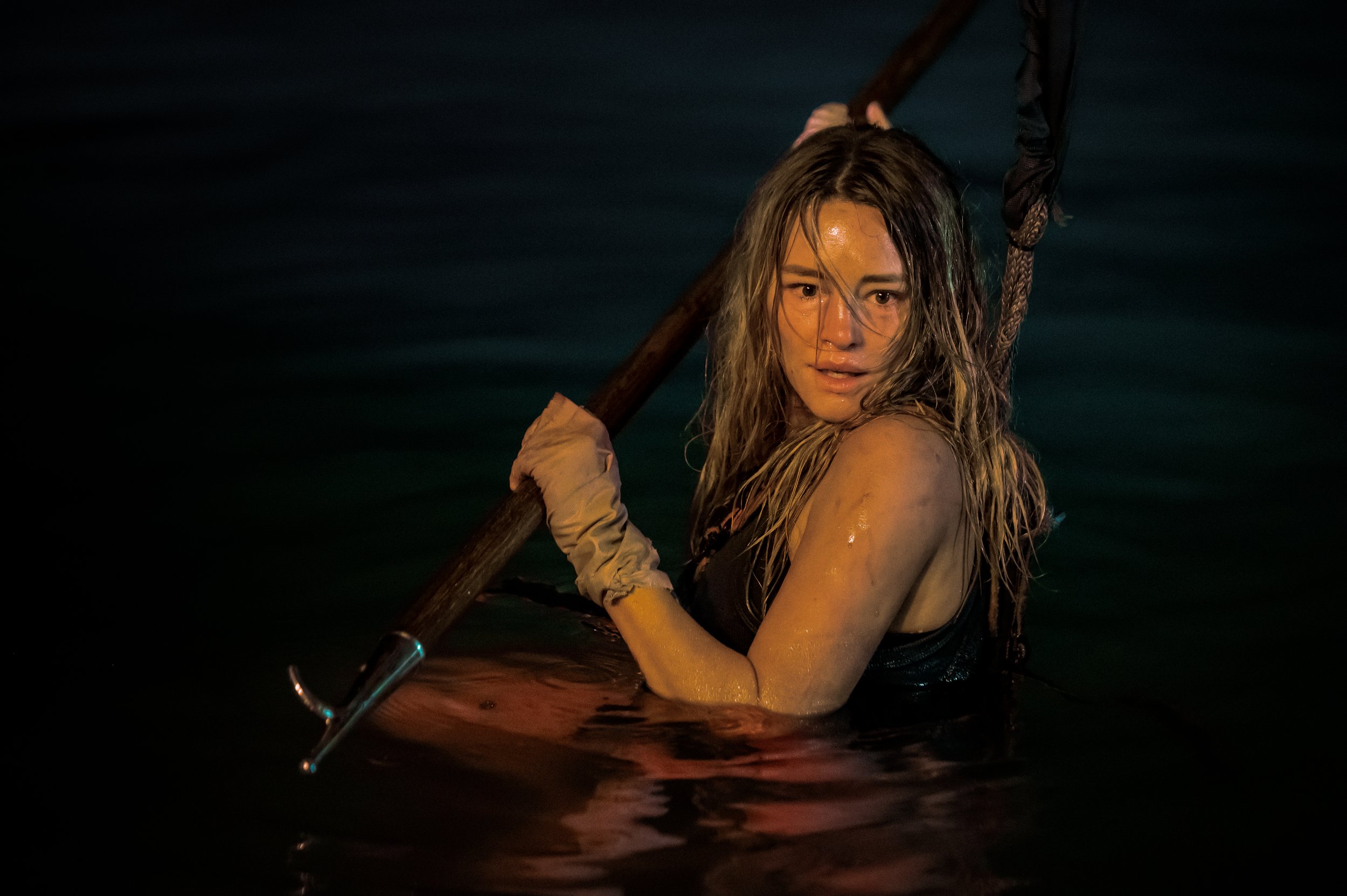With Dangerous Animals, director Sean Byrne (The Loved Ones, The Devil’s Candy) returns to the horror genre with a lean, vicious hybrid of survival thriller and psychological terror. It’s The River Wild meets Speak No Evil, only the river is the open ocean, and the evil is Jai Courtney at his most unhinged—and electrifying.
Courtney plays Tucker, a rugged, shark-obsessed loner who kidnaps free-spirited surfer Zephyr (Hassie Harrison) and traps her aboard his fishing vessel for a twisted purpose. The plot, simple on the surface, hides surprising depths. Like its predator-driven namesake, the film lurks in calm waters before launching sudden, ferocious attacks—both emotional and visceral.
Courtney’s performance as Tucker is a career-defining turn. Equal parts brutal and bizarrely charismatic, he brings the kind of primal intensity that evokes Tom Hardy, or even Kano from Mortal Kombat. Whether he’s dancing in his underwear, mumbling “Baby Shark” under his breath, or waxing poetic about shark conservation, Tucker is as unpredictable as he is terrifying. It’s a nuanced portrait of a villain—more than a monster, he’s a man defined by damage and delusion, which Courtney plays with both physical menace and psychological depth. As director Byrne hoped, this is Courtney’s Misery moment.
Hassie Harrison’s Zephyr is no slouch either. Best known for her work on Yellowstone and Tacoma FD, Harrison brings a haunted vulnerability to Zephyr that makes her sympathetic without ever seeming weak. Her arc—from a rootless nomad hiding from her past to a fighter forced to confront her fear—is sharply defined and grounded in a raw emotional truth. The chemistry between Zephyr and Tucker is not romantic, but uncomfortably intimate, like prey and predator locked in a dance of survival.
While some of the dialogue—particularly around the use of closed-circuit cameras—feels a touch expositional, the film’s sense of atmosphere more than compensates. The cinematography by Shelley Farthing-Dawe captures the isolation of open water beautifully, using tight spaces and low lighting to crank up the claustrophobia. The film was shot largely at sea, and that commitment pays off with a tangible sense of realism that adds to the unease.
The real sharks—yes, real—are another standout. The filmmakers wisely avoided animatronics or CGI overload, instead opting for authentic shark footage seamlessly blended with live action. These moments, supervised by Andrew Mason, are stunning and stomach-turning in equal measure. You’ll believe there are teeth lurking just below the surface.
Michael Yezerski’s score ratchets up the tension masterfully. At times operatic, at others barely a whisper, the music becomes an emotional undertow, pulling the audience deeper into the dread. Combined with David White’s unsettling sound design, the film keeps you constantly on edge—even in its quieter moments.
There’s a clear thematic line running through Dangerous Animals about captivity, obsession, and survival. Both Zephyr and Tucker are trapped—by past trauma, by the roles they play, and by the vast, indifferent sea. It's not just a shark film, and it’s certainly not just a serial killer film—it’s a story about what it takes to break free, and who gets to decide what’s worth saving.
Dangerous Animals is a ferocious, haunting thriller that punches far above its weight. It’s the kind of film that sneaks up on you—just like its villain. A few clunky lines aside, it's a tense, beautifully shot survival horror with a standout performance by Jai Courtney that should finally give him the accolades he's long deserved. This is a must-see for fans of dark, character-driven horror and anyone who likes their predators with a side of poetry and madness.
Jessie Hobson







